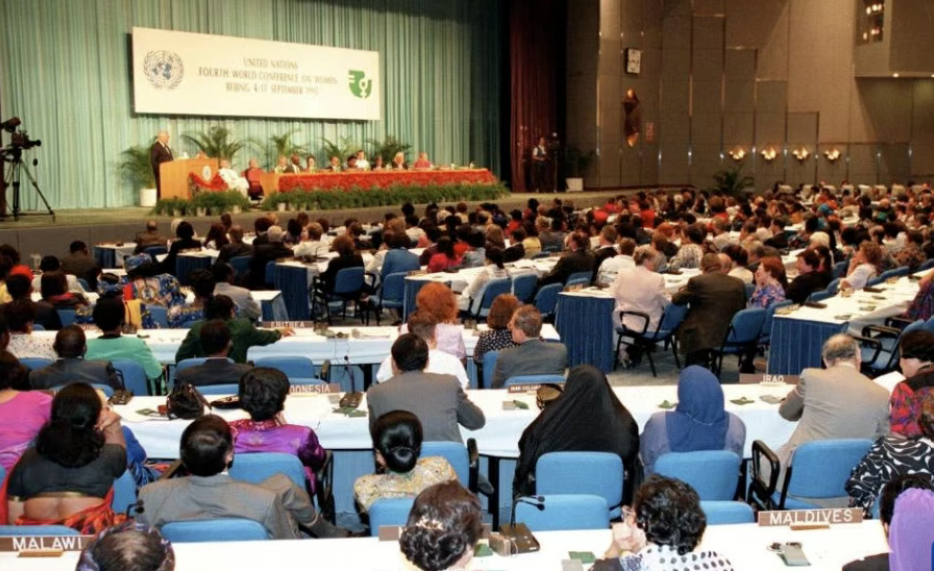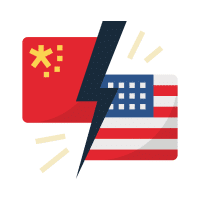From Beijing to Beijing: Thirty Years of Progress and Challenges in Global Gender Equality

On September 4, 1995, the Fourth World Conference on Women was held in Beijing, China, where participants adopted the landmark Beijing Declaration and Platform for Action. Source
Achieving gender equality and empowering women are among the United Nations’ Sustainable Development Goals for 2030—and key indicators of human civilization’s progress. In 1995, China hosted the Fourth World Conference on Women, where the Beijing Declaration and Platform for Action were adopted, marking a historic milestone for the global movement toward gender equality. Thirty years later, as the anniversary of that landmark conference approaches, China will once again host a Global Women’s Summit in Beijing, bringing together leaders and experts from around the world to chart the next chapter for women’s empowerment.
Over the past three decades, the world has made significant strides toward gender equality. Progress has included equal access to education for girls, a one-third reduction in maternal mortality, and a doubling of women’s representation in national parliaments. Many countries have also abolished discriminatory laws. In 1995, only 12 countries had a total of 354 legal provisions addressing domestic violence; today, 193 countries have enacted 1,583 laws combating gender-based violence—a major breakthrough in global gender equality legislation. Women’s voices have grown stronger in economic, social, and political decision-making, expanding their influence in national and global affairs and reshaping the international landscape with a more diverse and visible female presence.
Yet, with only five years left until the 2030 deadline, none of the gender-related Sustainable Development Goals are on track. In fact, the global march toward equality is backsliding. According to the World Economic Forum’s Global Gender Gap Report 2025, at the current pace, it will take 123 years to close the global gender gap—up from 99 years in 2019. UN Women reports that more than 600 million women and girls live under the threat of deadly conflict, nearly 2 billion lack any form of social protection, and close to 10 percent live in extreme poverty. Around the world, women’s and girls’ rights face unprecedented challenges—rising discrimination, weakening legal protections, and shrinking funding for programs and institutions that support them. Meanwhile, the digital gender divide is deepening inequalities in health, education, and economic opportunities.
Against this backdrop, the 2025 Global Women’s Summit in Beijing is not only an opportunity to celebrate the achievements of women in all fields—it is also a vital moment for the international community to renew its commitment to gender equality, share solutions, and chart a path forward. The recently released white paper, China’s Practice and Achievements in Promoting Women’s All-Round Development in the New Era, highlights the historic progress and systemic breakthroughs in women’s advancement since the 18th National Congress of the Communist Party of China. As the original host of the 1995 conference, China’s initiatives, proposals, and experiences will continue to contribute to the global advancement of women.
I have long focused on international exchanges surrounding women’s development and have actively shared the voices of Chinese women on the global stage. In recent years, Chinese women’s participation in global governance has shifted from passive involvement to active leadership. In my view, women have a vital role to play in advancing more inclusive, resilient, and sustainable global development—an approach that aligns closely with China’s vision for shared prosperity. The upcoming Global Women’s Summit offers women worldwide an invaluable platform to engage in dialogue, collaboration, and policymaking.
First, women’s leadership is essential to achieving lasting peace. The international community must translate this shared understanding into concrete action. As geopolitical tensions intensify, the “Women, Peace, and Security” agenda must remain central. We need to pay greater attention to women in conflict zones, enhance women’s roles in peacebuilding, and empower them to take part in post-conflict reconstruction—turning global consensus into tangible, multi-stakeholder initiatives.
Second, empowering women through diverse and practical measures can unlock tremendous social and economic potential. From education and economic participation to health and leadership, every step toward empowerment represents both a commitment to equality and an investment in society’s collective future. China’s experience—where 690 million women have shared in the nation’s prosperity—shows how activating women’s potential transforms not only individuals and families but also national economies, unleashing the powerful force of “her economy.”
Third, deepening exchanges and cooperation between the Global South and the Global North is crucial. Women’s development should be embedded in regional and global agendas. Initiatives such as the Belt and Road and the BRICS cooperation framework have already produced successful cases in women’s empowerment and hold great potential for expanding international collaboration.
Thirty years ago, China’s commitments, initiatives, and leadership gave strong momentum to the advancement of women worldwide. Thirty years later, the world’s attention will once again turn to Beijing. We hope this year’s conference will mark a new milestone in the history of global gender equality—injecting fresh energy into women’s empowerment and collective progress in the years to come.
The Chinese version of this article originally appeared on ifeng.com.
Author
-

Miao Lu is Co-founder and Secretary-General at Center for China and Globalization (CCG), a Beijing-based private think tank.

